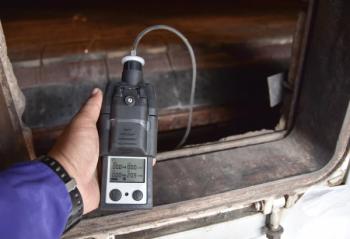
NIR Compared with Traditional Techniques to Diagnose Compartment Syndrome
Orthopedic surgeons determine the viability of near-infrared spectrometry as a compartment syndrome diagnostic technique.
Orthopedic surgeons from Brown University’s Department of Orthopedic Surgery and the Rhode Island Hospital have studied near-infrared spectrometry on patients with suspected compartment syndrome to determine if it is a viable alternative to more traditional, yet invasive, diagnostic techniques.
Compartment syndrome is a complication that can develop in the lower extremities of patients who have experienced trauma, such as fractures, severe burns, or crush injuries. The condition results from increased pressure in the osteofascial space, or compartment, and can cause muscle and nerve ischemia. If left untreated, contractures and serious infections can develop that may require amputation of the affected extremity, and in some cases it can be fatal. Currently, compartment syndrome is diagnosed most commonly using the intracompartmental catheter system, which provides accurate pressure measurements, but is invasive and potentially can do more damage to the tissue.
The team used near-infrared spectrometry to measure tissue oxygen saturation in patients with possible compartment syndrome. More specifically, they sought to determine the association between the tissue oxygen saturation (as measured by near-infrared spectrometry) and compartment pressure (as measured by an intracompartmental catheter). Light at near-infrared wavelengths was transmitted through bone and soft tissue and absorbed by hemoglobin. As ischemia affects the oxidation-reduction state of hemoglobin, the status of tissue oxygenation can be determined by the amount of light absorbed by the hemoglobin.
The team determined that, although near-infrared spectrometry can identify compartment syndrome, there is no statistically significant relationship between the findings of the two techniques. “This would indicate that compartment tissue oxygen saturation measurements by near-infrared spectrometry do not accurately correlate with the diagnosis of compartment syndrome, and that near-infrared spectrometry would not serve as a reliable diagnostic tool for compartment syndrome,” wrote the team in the March 2011 issue of Orthopedics.
Newsletter
Get essential updates on the latest spectroscopy technologies, regulatory standards, and best practices—subscribe today to Spectroscopy.





